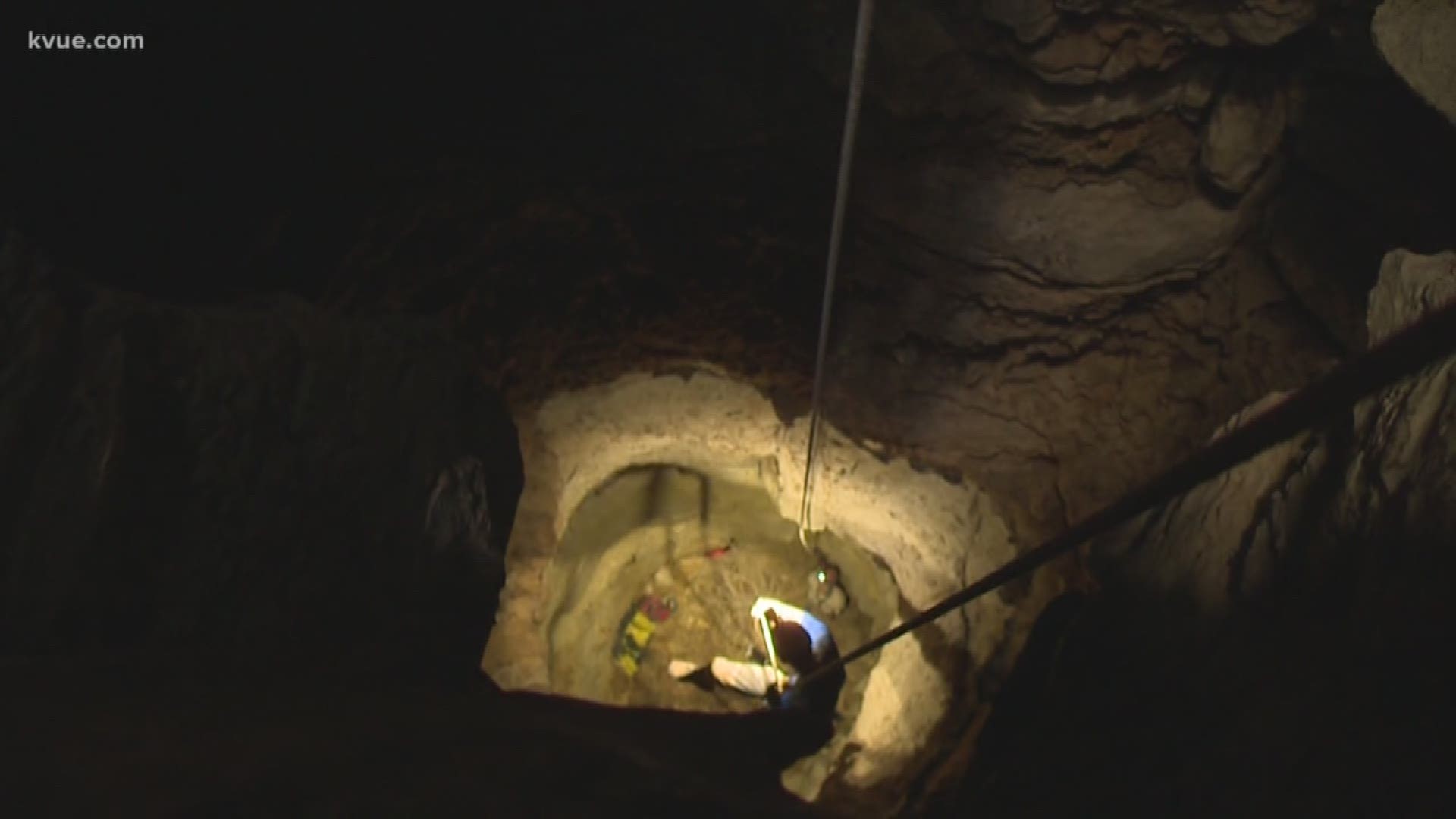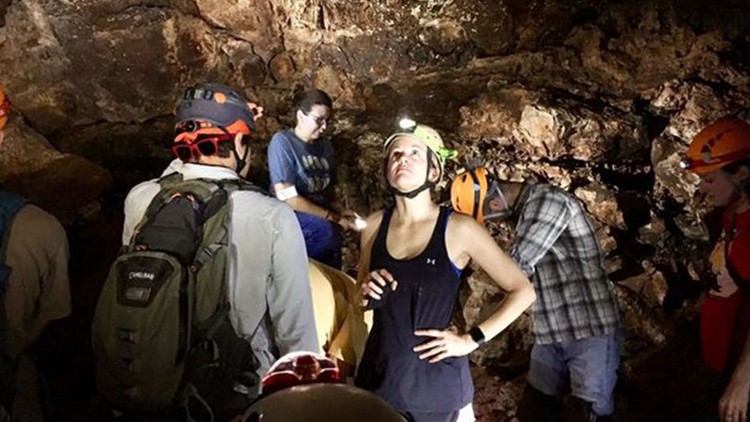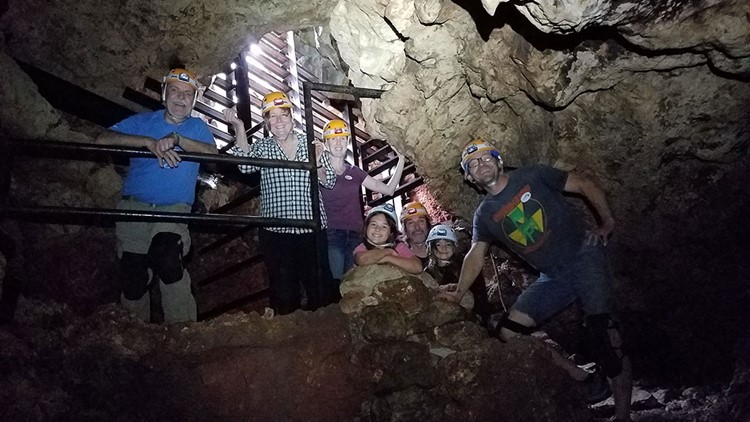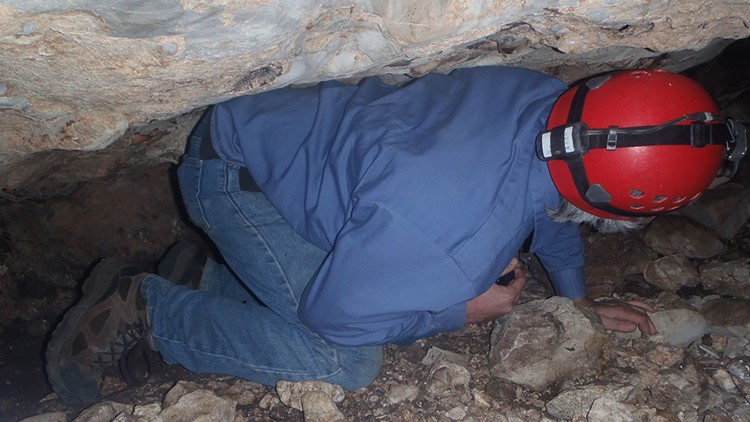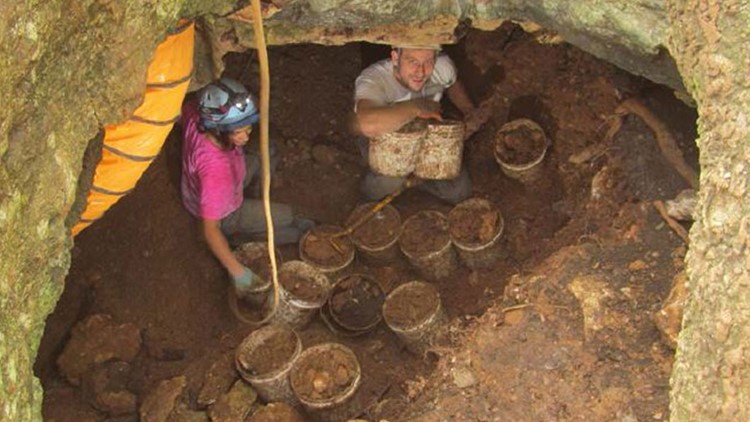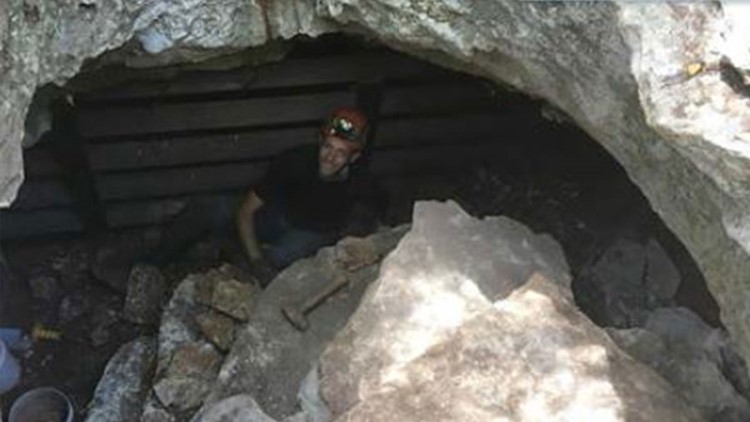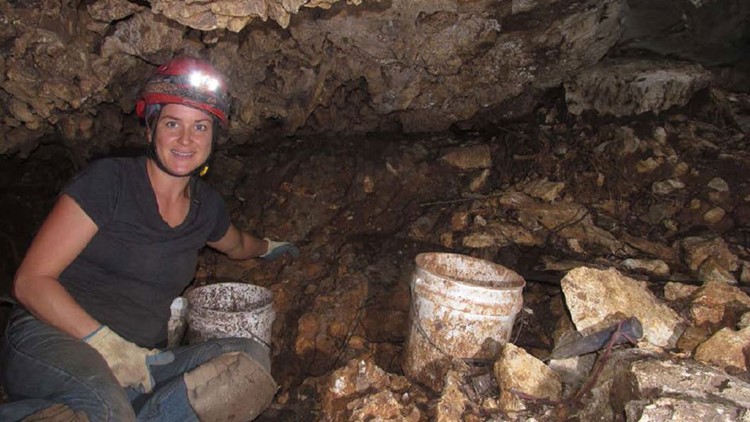AUSTIN -- Crews in Williamson County have yet to begin filling a cave that opened on a road next to homes.
You may remember in February that the roof of a cavern on Cambria Drive in Brushy Creek collapsed on a water line.
RELATED:
But what you may not know is that there are caves all throughout Austin that the city cleans out for environmental reasons.
KVUE visited one of the hidden caves in the area: Williams Well. It's located in former ranch lands in South Austin. We are not disclosing the exact location of the cave for safety purposes; people have had to be rescued in this cave.
PHOTOS: Inside Austin's hidden caves
Rich Zarria led the way to Williams Well, which is 80-feet deep, and geared up our crew to a rope and helped us down a step ladder down the cave.
We made it down 22-feet to a ledge that revealed a 50-foot chasm underneath us. We could not travel further down because we did not have the specialized training for this.
"One of the last opportunities to do pure exploration,” said Zarria.
In the cave, there are frogs, crickets and scorpions.
And only once per day, sunlight comes shining through the crevices in the cave, illuminating everything through it.
Zarria is cleaning out the cave to make it easier for water to get into the Edwards Aquifer.
Nico Hauwert manages the city's cave clean-out projects. He said the problem dates back to the 1800s.
"Pioneers didn't want the water going down to the ground,” Hauwert said. “So they made every attempt to plug caves and sinkholes. They wanted to keep their cattle and livestock from falling into shafts like this."
Caves plugged with pesticides, cans of gasoline, strings, license plates, cans and bottles.
When water does not flow to the Aquifer, “it goes down into the creeks, where it contributes to flooding,” Hauwert said.
The city has cleaned out 17 caves, including the La Crosse cave at the Lady Bird Johnson Wildflower Center, which took three years to clean out.
"Now that we've restored it, cave crickets (are) in abundance here," he said. "Rhadine beetles that are rare. Other species are coming in here and using this habitat.”
Back at Williams Well, the work continues.
"We know a lot about the surface of our earth,” said Zarria. “But when you get down below ... You have the chance to make discoveries that are pretty epic."
Discoveries which Hauwert loves to share.
"The joy I see on kids' faces when I can bring them down into a cave like this and they can explore,” said Hauwert. “Squeeze through, climb down a little shaft. And see the wonder of the underground frontier.”
A lot remains to be explored.
"Crawls you go through, walkways, hallways,” said Hauwert. “It's amazing what's down there. You have no idea from the surface this is all going (on) down below.”
Hauwert adds, "it's such a heritage for the people of Austin."
As our exploration came to an end, and we broke down our gear, we could not help but leave with a new appreciation for what lies beneath us.
The city's cave clean-out program manager estimates there are thousands of filled caves in the area. And the city has the resources to clean out only a few each year.
If you are interested in exploring caverns that are usually not open to the public, you can join the Underground Texas Grotto organization. They organize meetings for members of the public to sign up for expeditions and training sessions.

